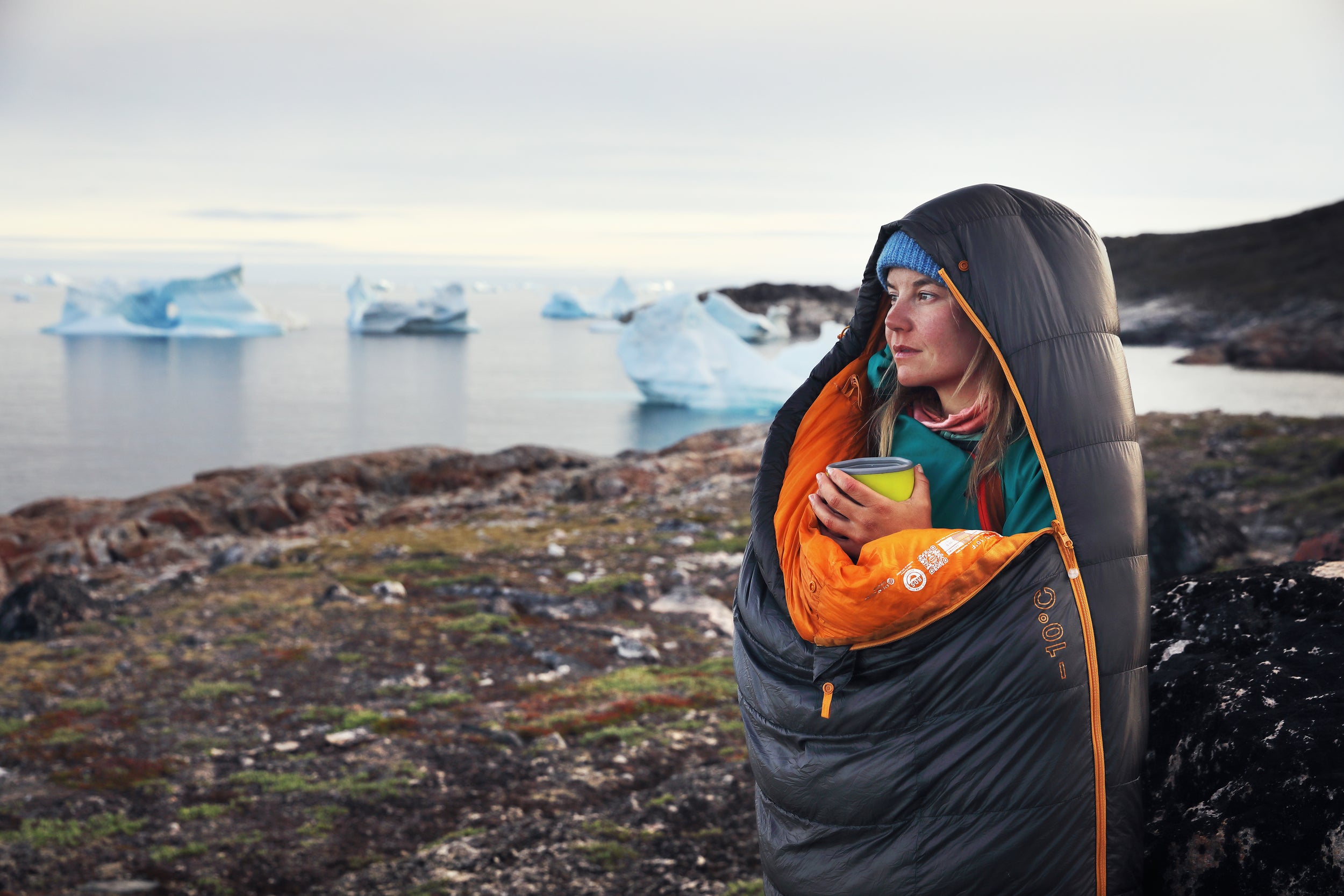
Sleeping Bags
-
How do I choose the correct size sleeping bag for my height and build?
It’s best to choose a sleeping bag that is close to your body size. Because your body heats up the space in the sleeping bag, if the empty space in the sleeping bag is much larger than your body, it will take more body heat and more time to heat the space. If you prefer a roomier sleeping bag, you may want to size up, but keep in mind you may not heat the space as efficiently.
-
Do you use any harmful chemicals on sleeping bags?
All fabrics used in our sleeping bags are OEKO-TEX® 100 certified. This means they are free of any flame retardants and PFCs (perfluorochemicals). Please visit the individual product page for details and specifications.
-
How do I wash my sleeping bag?
For most sleeping bag cleaning, we recommend spot-cleaning with a damp sponge. If the bag needs a deeper cleaning, use a front-loading machine with no agitator and follow the directions below based on the type of sleeping bag you have:
- For the EXPED MegaSleep and other synthetic-insulated sleeping bags, start by zipping the bag fully closed. Use a gentle or mild detergent. Select cold water and the delicate cycle on a front-loading machine. Do a second rinse cycle once the wash is complete. This will ensure all detergent is removed. Next, we recommend two spin cycles, which will remove excess moisture. Dry in a dryer with low or no heat or hang dry synthetic sleeping bags over. Be sure to support the sleeping bag over several lines or rungs of a drying rack to reduce stress on any one section of the bag.
- For down-insulated sleeping bags, start by zipping the bag fully closed. Use down wash as a detergent. Select cold water and the delicate cycle on a front-loading machine and do a second rinse cycle once the wash is complete. This will ensure all detergent is removed. Next, we recommend two spin cycles, which will remove excess moisture. Dry in a dryer on the medium heat setting. Include two or three clean tennis balls in the dryer to fluff the down and restore full loft.
-
How should I store my sleeping bag when not in use?
When not in use, we recommend storing your sleeping bag in a large mesh storage sack. This ensures the bag's insulation retains the maximum loft and warmth in use. When traveling it is okay to compress the bag and keep it stored in a waterproof dry bag. If the down is compressed or lacks loft after a long trip, put the sleeping bag in a dryer on a no-heat setting with two or three clean tennis balls. If the down does not regain its loft, it may need to be washed according to the instructions above.
When you return from a trip it is very important to dry your sleeping bag completely. Unzip the bag, spread it over a couch or several chairs and make sure it’s dry before storing it in the mesh storage bag. It’s best to store sleeping bags in a dry, temperature-controlled room, away from pets.
-
What are EN temperature ratings for sleeping bags?
The EN (European Norm) rating is a strict test designed to provide objective measurements and standardize how sleeping bags with hoods are compared and marketed across brands. It is intended to help customers make informed choices using independently derived temperature ratings.
Each EN sleeping bag test produces four temperature ratings - Upper Limit, Comfort, Lower Limit and an Extreme rating, with the following definitions:
- Upper limit: The temperature at which a normal man* can sleep without excessive perspiration. It is made with the hood and zips open and with the arms outside the bag.
- Comfort: The temperature at which a normal woman* can expect to sleep comfortably in a relaxed position.
- Lower limit: The temperature at which a normal man can sleep in a curled position for eight hours without waking up.
- Extreme: The minimum temperature at which a normal woman can stay for six hours without risk of death from hypothermia (although frostbite is still possible).
EN ratings are derived from controlled, scientifically repeatable tests. The humans who use these sleeping bags, however, can't be so precisely measured.
Many variables affect how warm a person will be inside a sleeping bag. Level of fitness, quality of recent sleep, level of hydration, level of exhaustion from the day’s efforts, food recently eaten, personal reactions to altitude, mental state and other difficult-to-quantify factors can have a significant effect.
Additionally, most people can identify themselves as either a “warm sleeper” or a “cold sleeper.” For cold sleepers, EXPED recommends choosing a sleeping bag one temperature rating warmer than EN tests would suggest. Also, because most of the heat lost in a night’s sleep goes into the ground, a properly insulated sleeping mat for the conditions is critically important.
Camp Footwear
-
How should I wash my Camp Booties and Camp Slippers?
To wash Camp Booties and Camp Slippers use a gentle or mild detergent. Select cold water and the delicate cycle on a front-loading machine. Dry in a dryer with no heat or hang dry.
-
How should I wash my Down Socks?
To wash Down Socks use down wash as a detergent. Select cold water and the delicate cycle on a front-loading machine. Dry in the dryer on the medium heat setting. Include two or three clean tennis balls in the dryer to fluff the down to its full loft.
